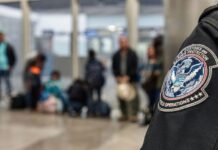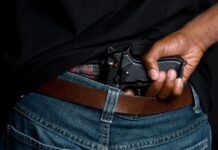Riley Howell was laid to rest Sunday in Waynesville, North Carolina, at a funeral service with full military honors. He was not killed in a Middle East war zone; he was not even an enlisted member of the Armed Services. Riley was a student at the University of North Carolina at Charlotte, who died rushing toward a person who entered his classroom with a pistol and began shooting.
Riley’s parents say he was shot three times at close range as he charged forward, but still managed to take the shooter to the ground so hard that he whined to first responders of internal injuries. It happened in the blink of an eye, but Charlotte-Mecklenburg Police Chief Kerr Putney credits Riley with saving countless lives and giving police, who fortunately were nearby, time to get to the classroom and detain the shooter. “But for [Riley Howell’s] work, the assailant might not have been disarmed . . . his sacrifice saved lives,” Putney said.
Indeed, Riley’s final act in life – saving others regardless of cost – was an ultimate expression of humanity, tragically juxtaposed to that of the extreme inhumanity exhibited by his killer. But, in leaving behind a legacy of heroism, he also offers an important lesson for us all.
We are told by the Department of Homeland Security that the appropriate response to an active shooter situation is “run, hide, fight,” in descending order of priority. Though perhaps effective for self-preservation, such instructions reflect a disturbing truth that we have in many respects lost the collective courage of our forefathers; and have become in large measure a nation that encourages the role of the victim and the submissive, rather than encourage proactive individual responsibility in defense of one’s life and values and the lives of others.
It is important to bear in mind also that such a passive mentality contradicts what little we actually know and have observed about the mindset of mass shooters.
Unlike traditional criminal activity involving firearms – which has been studied and researched at length by all manner of experts — we are only beginning to scratch the surface of the complexities of mass shootings; occurrences in which demographics, motives, planning, targets, and even firearms used, are characteristics that vary from one incident to another. However, one of the few, if perhaps only, common characteristics among most, if not all of these killers, is cowardice. These criminals tend to pick “soft” targets, in which victims are seen as unprotected and vulnerable; they then flee, surrender, or commit suicide at the onset of resistance or as soon as they perceive themselves to be in danger.
The evolution of law enforcement tactics for active shooter scenarios since the 1999 Columbine school shooting reflect this view. Officers now are trained to immediately seek and confront active shooters upon arriving at the scene, rather than spend precious minutes regrouping and waiting for additional tactical support.
Conversely – as witnessed in last year’s mass shooting at the high school in Parkland, Florida – where a law enforcement officer on the scene hesitates or hides, the tragedy is worsened considerably.
In the San Diego synagogue shooting two weeks ago, an unarmed Army veteran in the congregation who rushed and shouted at the shooter, was enough to send him scurrying to his car where he was quickly apprehended. When factoring in the number of incidents where armed citizens also played a role in prematurely ending active shooter situations before police arrive (documented excellently here), it becomes abundantly clear that the “run, hide, fight” prioritization of action is misplaced. Evil in whatever form is best met with immediate and assertive resistance
There is a reason why these cowards do not normally pick military or police targets for their sprees. The question is — or should be — what changes if suddenly “soft” targets were no longer declared to be safe havens for potential shooters; but instead seen as areas where students, teachers, congregants, clergy, mall shoppers, and everyone else were no longer willing to play the role of victim, but instead fight back with all the ferocity of those who value life and will protect it at all costs? What if we all found the courage, determination, and selflessness of Riley Howell?
A real willingness to change the passive mindset that now prevails in contemporary American culture, is a far better place from which to launch a national debate on how to deal with mass shooting situations, than is advocating for more “gun control” or for less First Amendment freedom. And doing so would more appropriately honor the sacrifice and heroism of Riley Howell.

































